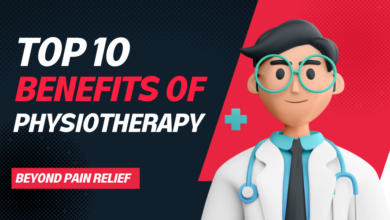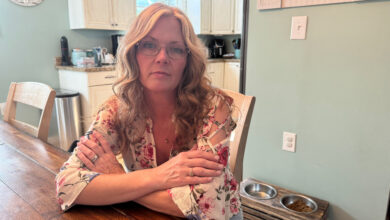
Ray Pfeifer and Luis Alvarez’s names are on the federal 9/11 legislation that establishes benefits for first responders. Both men fought to make Congress pass it while they were dying of cancer — and they had another thing in common. In spite of it all, they were content.
“I am the luckiest man alive,” Pfeifer, a former New York City firefighter, told me in 2017, just about two months before he died of cancer linked to his time working in the ruins of the World Trade Center. It was something he said often.
“I love doing this,” retired NYC police Detective Luis Alvarez told me 19 days before he died, the night before he testified to Congress in 2019 with Jon Stewart to help win passage of the legislation that would come to bear his and Pfeifer’s names. Several months earlier, just after his 63rd chemotherapy treatment, he’d called himself “blessed.”
Having run into a toxic scene of chaos and destruction, as New York City firefighters and police officers did on Sept. 11, 2001, and getting sick because of it, may not seem like a recipe for any sort of happiness.
But a new report released by the New York City Fire Department finds that Alvarez and Pfeifer are not rare cases. Indeed, ever since 2006, when doctors and researchers in the department’s World Trade Center Health Program began detailed tracking of the mental health status of its responders, they found a remarkable fact — that even as 9/11 responders’ self-reported physical health has declined over the years, they have consistently reported their mental health-related quality of life as better than that of average Americans.
According to the extensive report on how members of the FDNY World Trade Center Health Program have fared in the past 20 years, about three-quarters of more than 15,000 Fire Department responders are now suffering at least one 9/11-related ailment, including 3,097 cases of cancer. Remarkably, even those with cancer reported their mental health-related quality of life as better than average.
“What we’re seeing is a complete turnaround, where the mental health outcome, despite the illnesses going on, is a positive one,” said Dr. David Prezant, chief medical officer of the FDNY and director of its Trade Center program.
Exactly why a group of people might experience improving outlooks on life even as they are increasingly struggling with health problems is hard to say definitively.
Alvarez’s brother, Phil, said he couldn’t speak for others but thought that, in his brother’s case, it had a lot to do with a sense of service, and that he was able to keep helping people even as he ailed.
“The only time I saw him hang his head was towards the end,” Phil Alvarez said. “I said to him, ‘Hey, brother, you know this is going south on us, don’t you?’ And he said, ‘Yeah, I know.’ And that was it. No complaints, not like ‘F–k, it got me,’ not like, ‘I lost.’ It was just, ‘Yeah, I know.’ And before that, you never heard him complain. Never. It was always about others, and I think that’s what keeps you alive.”
George Bonanno, a professor of clinical psychology at Columbia University who just released a book called “The End of Trauma: How the New Science of Resilience Is Changing How We Think About PTSD,” said that emerging research suggests there can be something of a hero or survivor effect, which can buoy a person’s spirits. “The suffering has a reason, it has a purpose, and your pain is in the context of you did something remarkable,” Bonanno said. “Because suffering is not easy, and if it’s just plain old suffering because ‘Too bad you got this thing and nobody else has it’ — that’s really hard to deal with. Because it feels unfair. So instead of being unfair, [for] firefighters, they did it intentionally — they willfully went in there.”
The sense of satisfaction first responders can take from their actions is one factor behind this finding, agreed Prezant.
“They know that where they are today from a health perspective is because they stepped up and helped their co-workers, New Yorkers, this country, deal with the largest attack on civilians ever in modern history. They were there that day,” Prezant said. “And when you ask our guys and gals, fire and EMS, would they have changed a single thing that they did that day, I’ve never heard a single one say otherwise.”
He and Bonanno also pointed to the support networks first responders have, especially in the Fire Department, where the health program Prezant runs offers care for both physical and mental health problems.
Prezant, who survived the collapse of the south tower because he got blown under a pedestrian bridge that didn’t completely cave in, said he knew that day his members would need a long-term commitment to their health.
“You view the future differently, especially when you know that you have not been abandoned,” Prezant said.
Pfeifer and Alvarez often talked about making sure others had support to live with the residual effects of that traumatic period. When Alvarez described himself as blessed, he said his main concerns in traveling to the Capitol between his chemo treatments were to make sure people who didn’t have city pensions would be taken care of, and that guys like him would seek treatment and medical monitoring sooner.
Perhaps just as important for people who watched so many of their brethren die on 9/11 was appreciating the chance to see their own families thrive.
“I am the luckiest man alive,” Pfeifer said again during a 2017 visit to Arlington National Cemetery. “Knock wood. 9/11 happens. I’m supposed to work. I lived. Why? Because I switched my tour. So, then a couple years later, I get cancer. So what? You know, I had time with my kids, to watch my kids grow up.”
Similarly, Alvarez kept making the trips to Washington even though it exhausted him because, he said, “it’s like my legacy. I want my kids to know that Dad did everything he could to help.”
Bonanno said that the research for his book included interviews with many of the people who fled the burning twin towers, and nearly every person he interviewed talked of the firefighters going up the stairs while they went down, reassuring evacuees along the way.
“It’s an iconic story, and this will go down in history, really, and to be part of it is, I think, a remarkable thing,” Bonanno said.
KHN (Kaiser Health News) is a national newsroom that produces in-depth journalism about health issues. Together with Policy Analysis and Polling, KHN is one of the three major operating programs at KFF (Kaiser Family Foundation). KFF is an endowed nonprofit organization providing information on health issues to the nation.
USE OUR CONTENT
This story can be republished for free (details).


